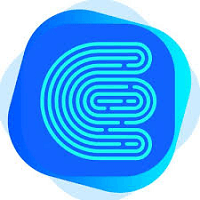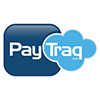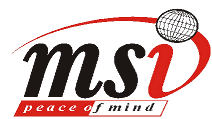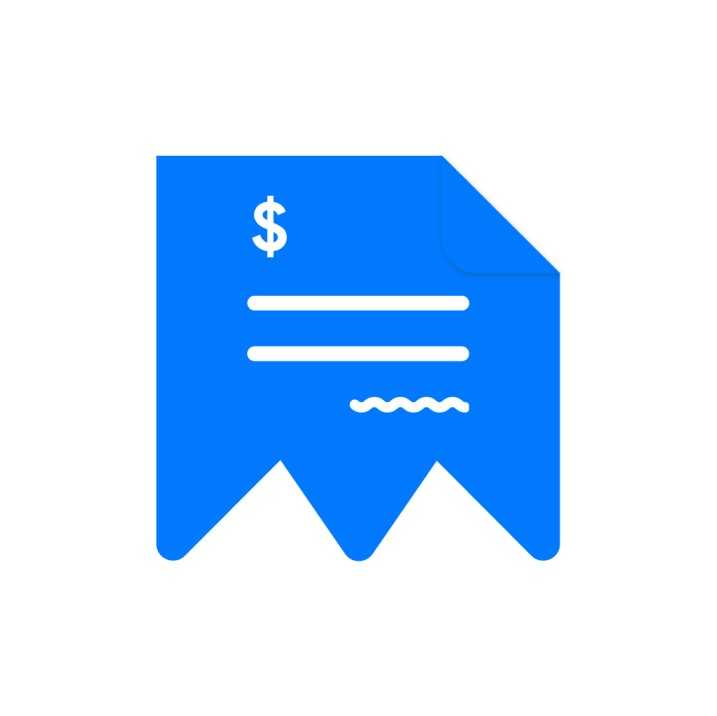Description

Entryless

PayTraq
Comprehensive Overview: Entryless vs PayTraq
Entryless and PayTraq are both financial management solutions designed to streamline accounting processes, though they serve slightly different purposes and audiences.
Entryless
a) Primary Functions and Target Markets:
- Primary Functions: Entryless is primarily an automated accounts payable solution. It simplifies the processing of vendor bills by providing an end-to-end solution for businesses to deal with invoice data entry. The software can extract invoice information, automate approval workflows, sync with accounting systems, and manage payment schedules.
- Target Markets: Entryless generally targets small to medium-sized enterprises (SMEs) that are looking to automate their accounts payable processes. It is particularly useful for businesses that handle a moderate to substantial volume of vendor bills and want to reduce the manual workload of their finance teams.
b) Market Share and User Base:
- Entryless is a niche solution within the accounting software market, well-suited for SMEs looking for automation in accounts payable. It doesn't hold significant market share compared to comprehensive accounting software like QuickBooks or Xero, but it integrates with these platforms to add value. Its user base primarily consists of small businesses utilizing it as a supplementary tool to their existing accounting software.
c) Key Differentiating Factors:
- Integration Capabilities: Entryless integrates with popular accounting software, enhancing its flexibility and usability for users who want to keep their existing systems.
- Focus on Automation: Its primary differentiator is the automation of the invoice handling process, which greatly reduces manual entry errors and speeds up the accounting cycle.
PayTraq
a) Primary Functions and Target Markets:
- Primary Functions: PayTraq offers a more comprehensive suite of business management tools, incorporating accounting, invoicing, inventory management, and CRM functionalities. It acts as a centralized platform for businesses to manage not only their finances but also customer relationships and product inventories.
- Target Markets: PayTraq is aimed at SMEs seeking an all-in-one solution to handle various aspects of business management. Companies that need more than just accounting software and are looking for integrated inventory and CRM solutions will find PayTraq beneficial.
b) Market Share and User Base:
- Due to its broader range of functionalities, PayTraq appeals to a different segment compared to Entryless. While its market share within the global accounting software industry might not rival major players, its comprehensive service suite attracts SMEs that prefer an integrated approach. Its user base likely consists of businesses needing detailed management of multiple operational areas.
c) Key Differentiating Factors:
- All-in-One Solution: PayTraq’s biggest differentiator is its comprehensive range of features beyond just accounting, offering significant value to users who want to streamline multiple business processes into a single platform.
- Modular Flexibility: The platform’s modular approach allows businesses to customize their use of PayTraq to fit specific needs, whether it’s focusing more on CRM, inventory, or other aspects.
Comparative Summary
Both Entryless and PayTraq cater to SMEs but focus on different aspects of financial and business management. Entryless is highly specialized in accounts payable automation, offering significant time-saving capabilities with invoice processing. In contrast, PayTraq functions as an all-in-one business management suite, attracting users interested in a more integrated approach for broader business needs. While neither holds major market shares against leading accounting software providers, each serves distinct use cases that make them valuable to their specific target audiences.
Contact Info

Year founded :
2013
+1 888-385-9178
Not Available
United States
http://www.linkedin.com/company/entryless

Year founded :
2014
Not Available
Not Available
Latvia
http://www.linkedin.com/company/paytraq
Feature Similarity Breakdown: Entryless, PayTraq
When comparing Entryless and PayTraq, both of which are financial tools designed to facilitate business accounting and management, we can break down their similarities and differences in terms of core features, user interfaces, and unique offerings.
a) Core Features in Common
-
Automated Accounting Processes: Both platforms utilize automated processes to streamline accounting workflows, minimizing manual data entry and reducing the chance of errors.
-
Invoice Management: Entryless and PayTraq offer features for processing and managing invoices, allowing users to send, receive, and track invoices with ease.
-
Expense Tracking: They both provide tools for monitoring and categorizing business expenses, helping businesses maintain a clear view of their financial health.
-
Integration with Accounting Software: Supporting compatibility with popular accounting software is common, facilitating smooth data transfer and ensuring the platforms complement users' existing financial systems.
-
Cloud-Based Solutions: Both services are cloud-based, offering accessibility from any location and device, enhancing collaboration and flexibility for users.
b) User Interface Comparison
-
Entryless: Often praised for its straightforward and user-friendly interface, Entryless focuses on simplicity and efficiency in navigating its features. The platform is designed to be intuitive, minimizing the learning curve for new users.
-
PayTraq: PayTraq offers a more robust dashboard with a comprehensive set of features visible at a glance. While it maintains a user-friendly approach, its interface tends to be more detailed, catering to users who might need more advanced functionalities accessible upfront.
c) Unique Features
-
Entryless:
- AI-Powered Invoice Data Extraction: Entryless utilizes artificial intelligence to automatically extract and process data from invoices, providing a high level of accuracy and speed in invoice management.
- Focus on AP Automation: Entryless specifically targets accounts payable automation, allowing for swift and efficient handling of supplier invoices and payments.
-
PayTraq:
- CRM and ERP Features: PayTraq expands its capabilities beyond just accounting, offering features like customer relationship management (CRM) and enterprise resource planning (ERP) functionalities, which provide a more holistic business management tool.
- Inventory Management: PayTraq includes robust inventory management features, making it particularly useful for businesses that need to keep track of stock levels, orders, and supply chain logistics.
Overall, while both Entryless and PayTraq offer essential tools for accounting automation, they cater to slightly different business needs and preferences. Entryless is ideal for businesses specifically looking to streamline accounts payable processes, whereas PayTraq appeals more to enterprises looking for a comprehensive business management solution that includes diverse functionalities beyond basic accounting tasks.
Features

Automated Data Entry
Integration with Accounting Software
Expense Management
Invoice Management

Inventory Management
Sales and Invoicing
Accounting and Finance
Best Fit Use Cases: Entryless, PayTraq
Entryless and PayTraq are both accounting and financial management tools designed to streamline various aspects of business finances, but they cater to different types of businesses and use cases. Here's an overview of the best fit use cases for each:
Entryless
a) Best Fit Use Cases
- Small to Medium-Sized Enterprises (SMEs): Entryless is particularly beneficial for SMEs that need to automate accounts payable processes. Businesses that deal with a significant volume of invoices can save time and reduce errors by utilizing Entryless to automate data entry and processing.
- Companies with High Invoice Volume: Businesses that manage hundreds to thousands of invoices monthly can significantly benefit from Entryless’s ability to process large amounts of invoice data with accuracy.
- Organizations with Global Operations: Entryless supports multiple currencies and tax rates, making it suitable for companies operating in multiple countries.
Industry Verticals:
- Retail: Businesses with numerous suppliers can streamline their invoice management.
- E-commerce: Companies can leverage automated processing to handle invoices from a wide range of digital suppliers.
- Manufacturing and Logistics: Organizations dealing with extensive supply chains can benefit from automated accounts payable processes.
PayTraq
b) Preferred Scenarios
- Comprehensive Business Management Needs: For businesses needing not just accounting solutions but an integrated business management suite that includes CRM, inventory, sales, and purchases, PayTraq is ideal.
- Growing Businesses Scaling Operations: PayTraq's scalable platform supports growing businesses by offering a suite of tools for various operational needs beyond just invoicing.
- Startups or Enterprises Seeking Cloud-Based Solutions: With its emphasis on cloud capabilities, PayTraq is well-suited for businesses that require remote accessibility and collaboration across different teams or locations.
Industry Verticals:
- Wholesale and Distribution: With a focus on inventory management and order processing, PayTraq suits businesses in wholesale and distribution sectors.
- Service-Based Industries: Companies offering services can benefit from integrated CRM and customer management features.
- Retail and Commerce: Retailers can leverage its sales and inventory management capabilities for better operational efficiency.
d) Catering to Different Industry Verticals and Company Sizes
- Entryless: Primarily caters to small and medium-sized businesses across industries needing streamlined accounts payable solutions. It is particularly beneficial for companies with high volumes of transactions that require accuracy and efficiency.
- PayTraq: Serves businesses of varying sizes, from startups to larger enterprises, that require a broader set of features including CRM, inventory, and sales management. This makes it versatile across different verticals like retail, distribution, and service industries.
Both products cater to businesses looking to optimize financial management, but their features and capabilities make them suitable for different operational needs and business complexities.
Pricing

Pricing Not Available

Pricing Not Available
Metrics History
Metrics History
Comparing teamSize across companies
Conclusion & Final Verdict: Entryless vs PayTraq
To provide a comprehensive conclusion and final verdict on Entryless and PayTraq, we will consider various aspects such as features, pricing, usability, and support. Here’s an analysis based on the data available up to October 2023.
Conclusion and Final Verdict
a) Considering all factors, which product offers the best overall value?
-
Entryless: This platform focuses on automating bill management and simplifying the accounts payable process. It is well-suited for businesses looking to streamline invoice processing and reduce manual data entry. Entryless integrates well with popular accounting software, enhancing its efficiency.
-
PayTraq: PayTraq is a comprehensive business management software that includes a wide range of features beyond just accounts payable. It offers accounting, CRM, inventory management, and more, making it suitable for businesses looking for an all-in-one solution.
Verdict: If you need a specialized tool specifically for automating accounts payable, Entryless provides targeted solutions with excellent integration capabilities. However, for companies seeking an all-encompassing business management platform, PayTraq offers better overall value due to its extensive suite of features.
b) What are the pros and cons of choosing each of these products?
Entryless:
-
Pros:
- Specializes in automating accounts payable.
- Seamless integration with accounting software like Xero, QuickBooks, and others.
- User-friendly interface focused on simplifying invoice processing.
- Reduces manual data entry and improves efficiency in bill management.
-
Cons:
- Limited to accounts payable; lacks comprehensive business management features.
- May not offer as many integrations or flexibility for broader business operations.
- Smaller companies or startups might find it costly relative to their needs.
PayTraq:
-
Pros:
- Provides a holistic business management solution covering accounting, CRM, inventory, and more.
- Offers a broad range of features that cater to various business needs.
- Suitable for growing businesses that require scalability in their software solutions.
-
Cons:
- The wealth of features may overwhelm users who only need specific solutions.
- May come with a steeper learning curve compared to more specialized tools.
- Businesses focused solely on accounts payable automation might find it excessive.
c) Are there any specific recommendations for users trying to decide between Entryless vs PayTraq?
-
For Businesses Focusing Solely on Accounts Payable:
- Opt for Entryless if your primary goal is to streamline the accounts payable process and you already have other systems in place for accounting and business management.
-
For Businesses Seeking a Comprehensive Solution:
- Choose PayTraq if you need an integrated platform that covers multiple aspects of business management, including accounting and CRM. It’s an ideal solution for mid-sized businesses that project significant growth and need software that can scale with them.
-
General Recommendations:
- Evaluate your business needs and existing software stack. Consider whether you need a niche solution for a specific problem or an expansive system to cover multiple operations.
- Conduct trial runs, if possible, to better understand which tool aligns with your daily business processes and is more user-friendly for your team.
- Factor in your budget and the total cost of ownership, including any implementation and training costs associated with integrating new software.
Each business will have unique needs, so it’s important to analyze the specific requirements and growth plans before making a decision. This personalized approach will ensure that the chosen software not only meets current needs but also supports future objectives.
Add to compare




